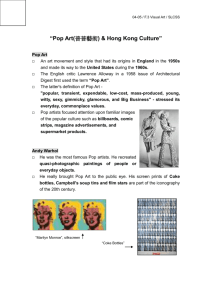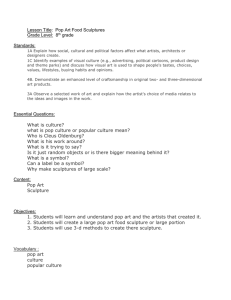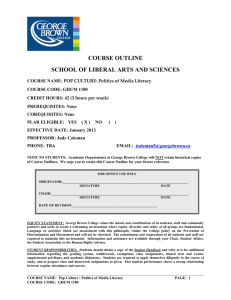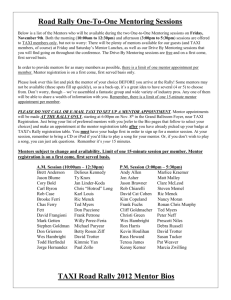Pop World, Sloane Square Magazine
advertisement
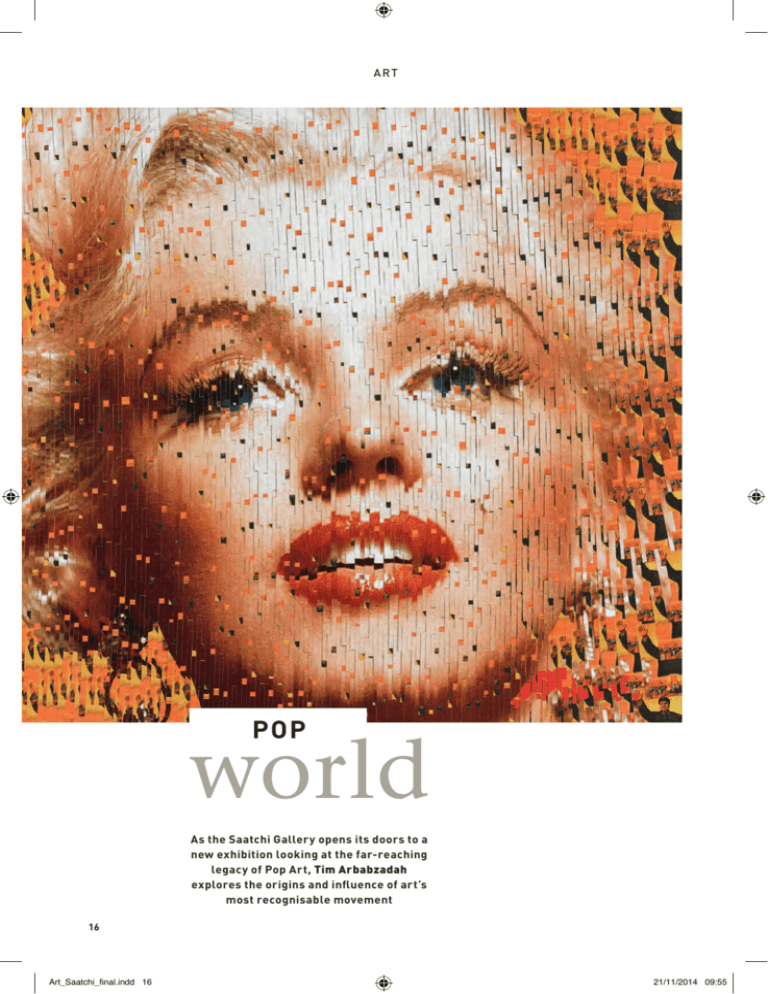
ART pop world As the Saatchi Gallery opens its doors to a new exhibition looking at the far-reaching legacy of Pop Art, Tim Arbabzadah explores the origins and influence of art’s most recognisable movement 16 Art_Saatchi_final.indd 16 21/11/2014 09:55 opposite: David Mach, M & M, 2014. Image courtesy of the artist Right: Grisha Bruskin, Man with Portrait of Lenin, 1990. Image courtesy of the Sepherot Foundation, Liechenstein. © Grisha Bruskin P op Art is one of the few artistic movements that almost anybody can recognise straight away. Show someone an Andy Warhol print and they will likely be able to tell you it is Pop Art and exactly who the artist is. From now until February 23, the Saatchi Gallery is holding an exhibition called Post Pop: East Meets West. Marco Livingstone, one of the three curators and a man who literally wrote the book (well, a book) on Pop Art, tells me it is all about the legacy as I meet him in his office in North London. “We’re not presenting this as a movement. We were very careful to call it Post Pop, without a hyphen, so that it’s about art since Pop,” he says. They decided to hang the show thematically rather than by nation or chronologically. The 256 works by 112 artists from four countries (Britain, the US, China and Russia) are therefore split up into six themes: Habitat; Advertising and Consumerism; Celebrity and Mass Media; Art History; Religion and Ideology; Sex and the Body. Such diversity is staggering. “Pop Art is very heterogeneous. It’s not a style, really; it’s a movement; it’s a series of ideas and processes and imagery, which a lot of artists have dipped into in different ways and shared,” he says. Pop Art’s roots are hard to place exactly, as with all art movements. What can be said, though, is that consumerism following the postwar era was one of the catalysts. “Suddenly the same material was noticed by a lot of artists. The same kind of imagery,” says Livingstone. In Britain there was the Independent Group who met at the Institute of Contemporary Arts (ICA) in the 1950s. This small group of artists included Richard Hamilton. “[He] first identified the work of his contemporaries as Pop Art in January 1957, so the term has been in use for over 50 years,” says Rebecca Beach, director of the Offer Waterman & Co gallery on Langton Street, which is currently selling an iconic Hamilton print inspired by one of the times Mick Jagger crossed the thin blue line. Livingstone notes that “Pop Art is very heterogeneous. It’s not a style; it’s a movement; it’s a series of ideas and processes and imagery” Marco Livingstone 17 Art_Saatchi_final.indd 17 21/11/2014 09:55
